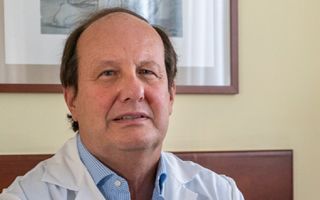(Finance) – “The data are worrying OECD report ‘Society at a Glance 2024′according to which the Total fertility rate in Italy is the lowesttogether with that of Spain, with 1.2 children per woman in 2023. It is confirmation, unfortunately, that the birth rate remains a serious problem, which must be addressed with constructive and far-sighted family policies.” As Ermanno GrecoPresident of the Italian Society of Reproduction (SIdR), regarding the Report of the Paris-based organisation.
According to the OECD, this decline is strongly affected by theincreasing age in which mothers have their first child, went from 26.5 years in 2000 to 29.5 in 2022 and this, observes Greco, “is a current problem but with dramatic consequences for future generations, who will find themselves facing an increasingly evident decline in births. It is necessary to intervene promptly, also through support medically assisted procreation techniqueswhich today are very effective, especially if associated with pre-implantation genetic diagnosis.”
Currently, specifies the President SIdR“in Italy the in vitro fertilization contributes 3% approximately of births, i.e. approximately 11 thousand births, while more than 5 million children were born in the world. The PMAs have gone from 90 thousand to 110 thousand, as emerges from the Report to Parliament on the PMA 2023 on the implementation of Law 40 of 2004″.
“To date – notes Greco – despite the worrying drop in births, the convention for in vitro fertilization treatments in most Italian regions it hasn’t left yetalthough this type of treatment is included in the LEAs. Only Tuscany and Lombardy they have affiliated private structures, in the rest of Italy they are only public and insufficient to meet needs. Furthermore, we believe it is essential that the clinical results of the various centers are accessible to couples as in other countries, for example England. Providing aggregate data makes no sense – he specifies – they are confusing and go against meritocracy and the interests of patients. I think that Italian centers should be given the opportunity to recruit donors for egg donation programs, as happens in other countries and this would allow greater access to heterologous fertilization, which is very important if we consider the average age of women who approach ART” .
The Italian Society of Reproduction (SIdR) promotes scientific research, information and training in the field of assisted reproduction, to give couples the best opportunities and options available while respecting ethical principles. “It is necessary to encourage dialogue between experts, institutions and civil society to promote greater knowledge on the topic of MAP, which is often experienced as a taboo by the couples involved” concludes Greco.
